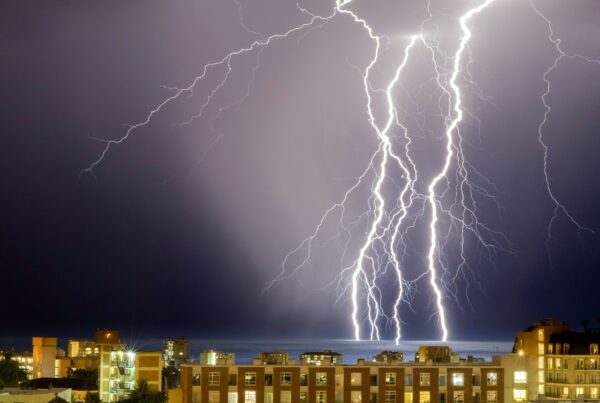Every afternoon just before dusk, thousands of birds flock together outside a popular shopping mall in Quezon City, Philippines. Some of the birds (known locally as Tarat, in the shrike family) roost on power lines, or under the mall’s eaves, while the others who didn’t manage to squeeze in take to flying instead. It’s an awe-inspiring sight animating the steadily-dimming sky—the sheer number of these wildly flying birds seems like something the mall itself staged as a sort of attraction for the shoppers.
But there’s nothing graceful about the birds’ flight; if anything, they appear to be restless.
The truth is: the land where the mall stands now used to be a vast mango orchard sixteen years ago. Those loitering birds, prodded by instinct, are actually just looking for their old leafy home, surprised to see it’s now an impersonal behemoth of steel and concrete.
Wind Farms and Habitat Loss
It’s not just malls. Wind farms are also notorious for displacing indigenous bird species.
When badly sited, wind farms can seriously affect bird populations through direct or indirect habitat loss. Wind turbines can act as barriers to the natural route of birds to their feeding or roosting grounds. Collision with turbine blades is also a cause of death for the birds.
A 2012 research in the UK done by the Royal Society for the Protection of Birds (RSPB) and the Scottish Natural Heritage have concluded that wind farms can cause up to 50{e3829ec1db02d54faaf9fa2de0d48db26af01d7a7944a63c3b26976124791cab} local reduction of birds species, particularly the Curlew and Snipe, heavily affecting their survival and breeding success.
Also, wind farms pose a significant threat to bird populations not just from the turbine blades themselves but from the construction work happening years prior. In most cases, the construction period poses the most risk for the birds, rather than the post-construction and operation period.
Bird-Friendly
Animals and nature in general have always bore the brunt of the destructive nature of mankind’s various construction projects—whether it be an airport, or a technology park, or a shopping complex. Even well-intentioned, supposedly green structures like wind farms can defeat their purpose just because they invade natural habitats and migratory stops of birds.
RSPB’s study encourages regulatory authorities and developers to enforce stricter guidelines for the construction of wind farms. In particular, proper siting is very important. Also, construction should be limited to non-breeding periods, if only to leave the birds undisturbed while they do their thing.
Back in 2004, even Dongtan—the infamous eco-city of China that unfortunately never came to fruition—had specific measures to protect the black-faced spoonbill which normally flocks at the banks of the Yangtze River. Dongtan didn’t exactly pan out, but it’s good to know that it once included our feathered friends in its grand scheme of things.
It’s a bird.
Meanwhile, the birds still go flapping their wings restlessly outside that mall in Quezon City. People on the street and shoppers who have wandered outside will watch the aerial acrobatics, amazed for a good half an hour or so. And then everyone’s necks will get tired, and they’ll just go on about their daily lives.
Until builders develop a contingency plan for the ecosystem they would be disrupting/displacing because of their construction projects, until the government learns to prioritize nature over economic profits, until laws are enacted which protects bird and animal habitats before anything else—more of these structures will just get built with disregard for nature.
With careful planning however, it can be a win-win scenario for man and nature.
Tomorrow as the sun sets, it’ll be the same thing over again outside the mall. Restless, flying birds and clueless spectators.










